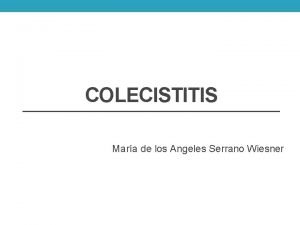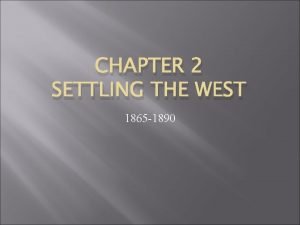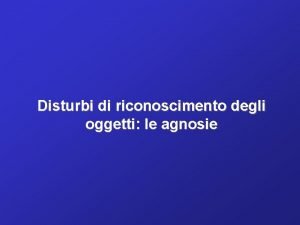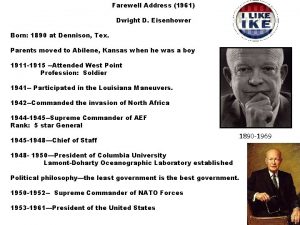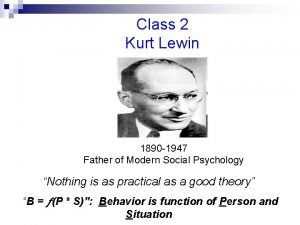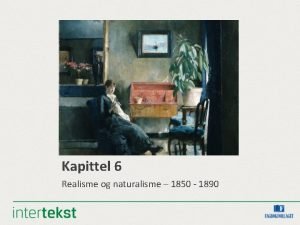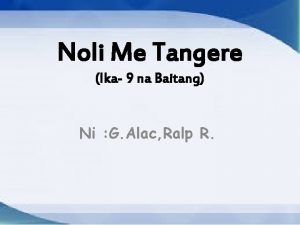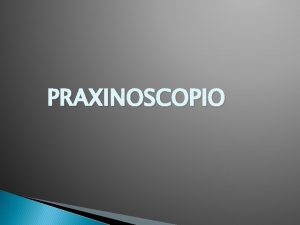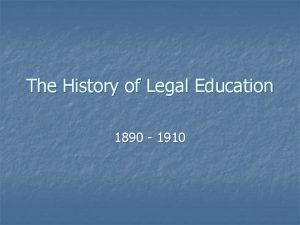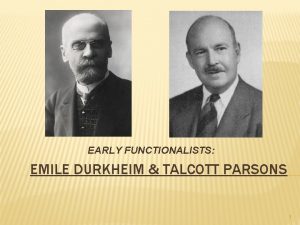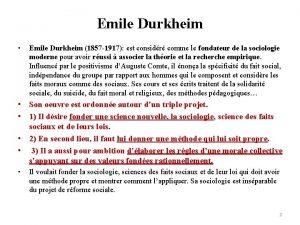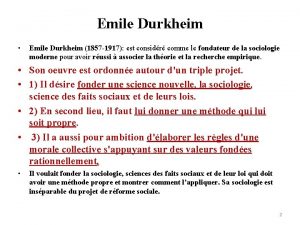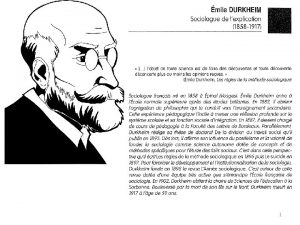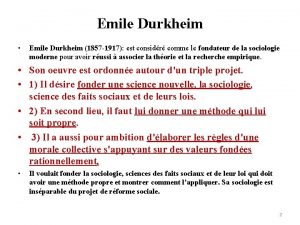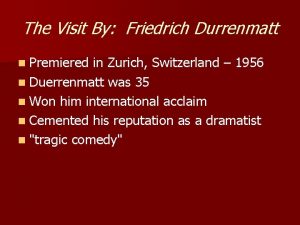1890 s to 1910 Emile Reynaud Premiered the














- Slides: 14

1890 s to 1910

Emile Reynaud Premiered the very first animated short film in 1892, “Pauvre Pierrot” (Poor Pete). It consisted of 500 individually painted images and lasted about 15 minutes. Opened the first theater dedicated to the moving picture in 1892, the Theater Optique, predating Auguste and Louis Lumière's first public performance by three years. “Pauvre Pierrot” was the first film to demonstrate the Theatre Optique system developed by Reynaud in 1888, and is also believed to be the first usage of film perforations. The image was back projected onto the screen.

Edison’s Kinetograph and Kinetoscope 1890 -1893 • The initial experiments on the Kinetograph (the camera used to create film for the Kinetoscope) were based on Edison's conception of the phonograph cylinder. This proved impractical. • The creation of celluloid-film by Eastman Kodak proved the best material and changed everything, and inventors started buying it in bulk. • A patent for the Kinetograph (the camera) and the Kinetoscope (the viewer) was filed on August 24, 1891. In this patent, the width of the film was specified as 35 mm, and allowance was made for the possible use of a cylinder.

The Black Maria Construction of the imposing Black Maria began in December 1892. In order to take full advantage of sunlight, the tar paper–lined studio was equipped with a hinged, flip-up roof and the entire structure could rotate on a track. "It obeys no architectural rules, " declared Dickson, who found it "productive of the happiest effects in the films. ”

For the benefit of Science Thomas Edison's Kinetographic record of a Sneeze starring Fred Ott (1894) The first copyrighted motion picture

The Kiss (1896) John Rice May Irwin Quite the scandal for a big screen The shock of seeing a projected medium close up.

The Lumiere Brothers and the Cinematograph • The Cinematograph was a motion picture film camera, which also served as a film projector and printer. • The device was first invented and patented as the "Cinématographe Léon Bouly" by French inventor Léon Bouly on February 12, 1892. Bouly coined the term “cinematograph”, from the Greek for “writing in movement. ” • Due to a lack of money, Bouly was unable to develop his ideas properly and maintain his patent fees, so he sold his rights to the device and its name to the Lumière Brothers. • In 1895, they applied the name to a device that was largely their own creation.

• Their first film “Sortie de l'usine Lumière de Lyon” was publicly screened at L'Eden, the world's first and oldest cinéma, located in La Ciotat in southeastern France, on September 28, 1895. • The first commercial, public screening of cinematographic films happened in Paris on December 28, 1895 and was organised by the Lumière brothers. • The cinematograph was also exhibited at the Paris Exposition of 1900. At the Exposition, films made by the Lumière Brothers were projected onto a large screen measuring 16 by 21 meters (approximately 52. 5 x 69 feet). • The Lumiere brothers were known for onlocation shooting with everyday subjects, while Edison filmed primarily in his Black Maria studio. The world's first film poster, for 1895's “L'Arroseur arrosé”

Enter Georges Melies • He was magician and son of a shoemaker. • He purchased famous magician Robert Houdin's theatre in Paris. • He saw the Lumiere films in 1895 but they wouldn't sell him a camera. So he built his own.

• Melies used his background as a magician to create the first special effects in film history. • He built and painted his own props and sets, hired actors and stage crews. • He essentially created the concept of the studio process.

By trial and error, he discovered: 1. jump cuts 2. dissolves 3. fade in/fade out 4. stop motion 5. split-screen effects

Melies was a bad business man • He sold his films outright. • He spent so much time in production, he didn't have the time for copyright protection. • Edison copied a lot of his films and distributed them in the US with no money coming to Melies. • Having a NY office did little to help. • By WW I, he was out of business. • He sold most his films and stage props to cover his bills, and they were melted down to help with the war effort. • He filmed over 500 films. Less then 100 exist today.

Board and Card Games • 1890 Old Maid • 1890 Round the World with Nellie Bly • 1890 s Young Folks Historical Game • 1891 Fish Pond Game • 1891 Skirmish at Harper’s Ferry • 1891 Strategy game • 1895 Mansion of Happiness

And still more games. . . 1896 Golf Game 1896 Goosy Gander 1898 Bombardment game 1898 Jack and the Bean Stalk 1899 Phoebe Snow Game 1899 Topsy Turvy (But Nintendo was first before all of them)
 Hidrocolecisto
Hidrocolecisto Marshall keynes
Marshall keynes Sinabi ni badayos ( 2000) na ang pagsulat nang mabisa ay
Sinabi ni badayos ( 2000) na ang pagsulat nang mabisa ay The population of smallville in the year 1890 was 6250
The population of smallville in the year 1890 was 6250 Soddie
Soddie Agnosia appercettiva e associativa
Agnosia appercettiva e associativa Born 1890
Born 1890 The population of smallville in the year 1890 was 6250
The population of smallville in the year 1890 was 6250 Observation of rizal in london
Observation of rizal in london Father of social psychology
Father of social psychology Naturalismen roman
Naturalismen roman Old imperialism motives
Old imperialism motives Naglimbag ng noli me tangere
Naglimbag ng noli me tangere Kaugnayan ng noli at el fili
Kaugnayan ng noli at el fili 1890'lı yıllarda ingiltere'de whiff
1890'lı yıllarda ingiltere'de whiff
